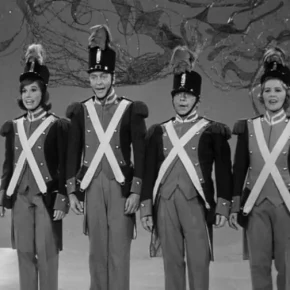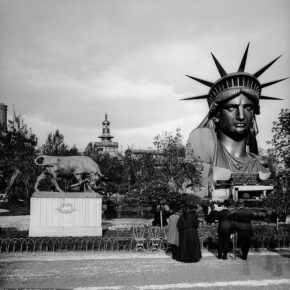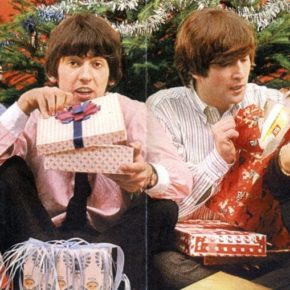There has been a lot of discussion about bicycles and their place in the greater streetscape. I certainly have a lot to say about it, but don’t have a lot of time to write about it just now – gotta get a post up before midnight, y’know – so I ask for some discussion in the comments of this post (try and keep it there, as not all of my followers are on Facebook).
When I ride my bike in DC, I tend to take the lane, toward the center, and ride like a car should drive – i.e. I am a vehicular cyclist. I realize that not everybody can manage that pace, or is that confident on a bike where traffic abounds, much of it not entirely friendly toward cyclists.
Because of that, I’m not always a fan of bike lanes, cycletracks, and the like, as I feel most of these things don’t provide cyclists the exposure they need to develop their skills and to allow motorists to adapt to the presence of bicycles in the roadway. Yes, I will use some bike lanes and cycletracks, but just as often I’ll ride in the general traffic lanes, as I can make better time, ride faster, etc.
I realize this flies in the face of many of the bicycle advocates and activists in DC, who pine for more lanes, more sharrows, more cycletracks. I realize that these facilities provide a sense of safety to the hesitant, beginner, or ultra-casual cyclist, and that they can help build a vibrant cycling community.
But I seldom see them done correctly, as I’ve seen in Europe and other U.S. cities. Instead, things are done with compromised designs. For example, the Pennsylvania Avenue cycletrack is far too easily crossed by drivers, who make U-turns with little chance of penalty. The zebra barriers, installed on one block of this track, were installed so far out of spec that it’s comically easy for cars to U-turn over them without incident. Another example is the L Street cycletrack, with bollards that allow cars and delivery trucks to block it with ease.
Not to mention the 15th Street cycletrack that is seldom cleaned, or the multi-use path in Rock Creek Park that is so narrow and poorly paved that its safety is compromised to the point where there’s no safety advantage to using it along most of its length. These are bicycle facilities that are lacking in complete execution, compromised in many respects and doing a disservice to cyclists (and in the case of Rock Creek, pedestrians and equestrians).
And the bike lanes on narrower, one-way streets put the cyclist right in the “door zone” of parked cars. I recently found myself doored because of this – it’s not fun.
So I posit this: why build more of these half-baked facilities that send a mixed message to all road use communities? Isn’t it all just good money gone to waste?
My stance: either build bike facilities properly (e.g. install the zebra barriers on Penn to manufacturer’s specifications, build a curb to create a proper cycletrack on L Street), or concentrate on consistent enforcement of traffic laws for all road use groups.
That’s a bit of an oversimplification. I will explain more in the future – deadlines, y’know…















IfZenElse
22 November 2013 — 03:46
Great topic. I tend to ride the same way in urban areas as you do and “take the lane”. I have never been doored thankfully but I am constantly in fear of it when I ride close to parked cars. Stories like your recent collision reinforce for me that even experienced cyclists, paying attention to what they are doing, can fall victim to others not paying attention when they open their doors and I am not willing to just play the odds. Taking the lane eliminates the door issue and places me in a position to be more visible to motorists. I am still vulnerable to someone not paying attention and hitting me but those odds are reduced significantly by the fact that it’s ONE motorist behind me that has to notice me and pay attention to where I am at as opposed to dozens of motorists passing me in close proximity when I ride in a bike lake not physically separated. Just as riding past hundreds of parked cars while in the door zone increases your chance of being doored, to the point that it’s an inevitablility eventually, so is riding on roads where dozens or hundreds of cars are passing you in the same lane when too many of those motorists are texting. It becomes a statistical likelihood that I will be hit so I much prefer to lower the odd by lowering the number of people whose attention I have to gain and keep. I feel comfortable riding this way though because I am fast enough to keep up in traffic, like to ride aggressively (speed-wise not unsafe riding) and enjoy the adrenaline rush it produces. I don’t think I would feel as comfortable taking the lane if I was not willing and able to keep up with other traffic and likely to generate hostility in the drivers behind me. I also ride with my front and rear lights on all the time (day and night) when riding this way to increase the likelihood that motorists will see me.
So to answer your question about doing bike lanes right or not at all, I am of the opinion that anything that makes motorists more aware of bicycles is a good thing and these lanes, though imperfect to be sure, do reinforce to motorists that there are bicycles using this road also and they need to watch for them. But we should not be satisfied with bike lanes only. When fully separated lanes are provided, more casual riders/ commuters will feel safe riding and consequently more people will decide to commute by bicycle, further reducing motor traffic and making the investment in those lanes justified further. And more bikes means motorists are more aware of them, ultimately making it safer for all since if becomes a given that there will be a bicycle in your lane or crossing your path at some point during their commute and this a regular part of their day as opposed to something unusual and thus not considered at all times.
My 2 pennies.
JohnD
22 November 2013 — 10:45
Agreed.
The only real and lasting solution is one that fundamentally alters the motorist’s perception to accept cyclists as equal users of the road.
Unless cities commit to building dedicated and physically separate flows of traffic for motorists and cyclists, these half measures (sharrows, bike lanes, etc…) will only reinforce in the motorist’s minds that bikes do not belong on the road.
That’s why I hate the term “Share the Road”. Here, share implies that motorists own the road and that it is only through their own compassion that they allow cyclists to use it.
It is highly impracticable that the vast US road network will be significantly altered to allow for truly separate flows of traffic.
So what do we do? I don’t really know, but I propose the following idea.
To fundamentally alter motorists perception of acceptable road use to include cyclist, they must be hit where they are most susceptible; their wallets. Take for instance the application of Automated Red Light Traffic Cameras. Where “the addition of red light camera enforcement further reduced red light violations by 96 percent beyond levels achieved by the longer yellow timing.”1
If a motorist enters a bike lane, they get a ticket. If a motorist parks in a bike lane, they get a ticket. If a motorist passes a cyclist too closely, they get a ticket. If a motorist hits a cyclist, they get a ticket. If a motorist injures a cyclist, they go to jail. And so on…
1.Reducing Red Light Running Through Longer Yellow Signal Timing and Red Light Camera Enforcement: Results of a Field Investigation
washcycle
7 December 2013 — 00:35
The reason to build these facilities is that they encourage more people to bike, and in so doing they make people feel safer.
You feel safe riding in the middle of the lane. That’s great. So do I. But we are not the full sample of all people. Some do not like it, and of those some do like riding in bike lanes or cycle-tracks. So we build them for those people.
In addition all of your complaints about them not being done right ignore the fact that they work. They encourage cycling, help cyclists move faster and don’t actually make them any less safe – despite your fear that they do. Numbers show this.
The facilities could be better. The zebra installation is a test, so let’s not get too bent out of shape about it. But, the idea that they aren’t good enough ignores everything we know about biking in DC.
InvisibleHand
7 December 2013 — 22:13
@WashCycle … The conclusion that facilities taken as a whole “work” comes with a whole host of caveats that are conveniently ignored when evaluating the risk research. Are facilities as a whole a death trap as commonly put forth by the VC crowd 10 years ago? No. Any practical model of cycling risk has to accommodate some notion of “safety in numbers” and that there are factors outside of the classic visibility/lane placement that matter. Nonetheless, there are clear signs that some facilities are better than others — some increase risk on the margin — and that the literature still has a hard time identifying parameters. For instance, it’s pretty clear that riding at faster speeds increases the likelihood of going to the hospital/submitting a police report — a common metric — but I’d be surprised if RD rode as fast in the 15th ST cycletrack as he does in the normal traffic lane.
Getting away from what we “know” — much is up to interpretation and what one cares about — after reading Szczepanski’s Bicycle Times article where she discusses how to ride safe in a cycle track, it seems perfectly natural to say that some facilities are (not) good enough.
InvisibleHand
7 December 2013 — 22:27
Money gone to waste is an overstatement, in my opinion. I think we’ve learned and confirmed a lot of things from experiments in the area and it has broadly encouraged cycling. Although I think it’s also sends mixed messages to the population.
Personally, I think we have the bar too low with respect to facility quality. Although I’m willing to bend somewhat if a facility is particularly important with respect to connecting a transportation grid and some reinforcement for taking the lane is given. To be brief, some facilities are “safe” at 8 mph but “dangerous” at 15 mph. So if you can reduce harassment for lane takers but accommodate “folk cyclists” I can hold my nose.
FWIW, I prefer the L ST cycletrack over 15 ST.